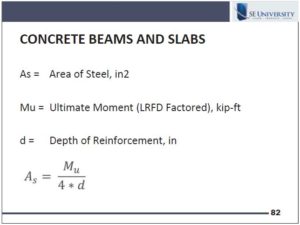How often do you double check your structural software analysis to be sure the results are accurate and expected? Just because the model shows all members pass the code check doesn’t mean the designer is off the hook to be sure the design is sound. Hand calculations and quick verity checks of the software results are necessary to ensure a code compliant structure is delivered to the client.
In the November 2017 SE University session, Matt Brown, SE, from Newport Structural Design, Inc. gave a presentation on Validating Software Results. After reviewing many of the common errors designers make during structural modeling, Matt offered some rules of thumb to help encourage engineers to double check their software results and not blindly trusting the computer output.
For example, Matt reminded engineers that a good span-to-depth ratio for steel beams under a standard floor load should be about 24 to meet strength and deflection requirements.
Also, Matt talked about how most engineers do not have a feel for the capacity of each wide flange beam since the code has moved to be more strength based. However, given a 50ksi steel beam, most engineers intuitively know that a proper bending stress should be around 30ksi+/- with an appropriate safety factor. Therefore, if engineers take a closer look at the bending stresses of their members after running the model, inaccuracies can be caught if there was an input error in material properties or other oversight.
In terms of double checking the results of a design in concrete, Matt offered a general rule of thumb for the amount of reinforcing steel. As shown in the slide below, Matt provided a quick check for the amount of steel required for a given bending moment. This check can help avoid any software errors that could result from improper inputs for rebar spacing or incorrect placement of steel.
Using some quick rules of thumb, engineers can help avoid big errors that can result from an inaccurate model, and it is important for engineers to know what to expect before hitting ‘SOLVE.’

